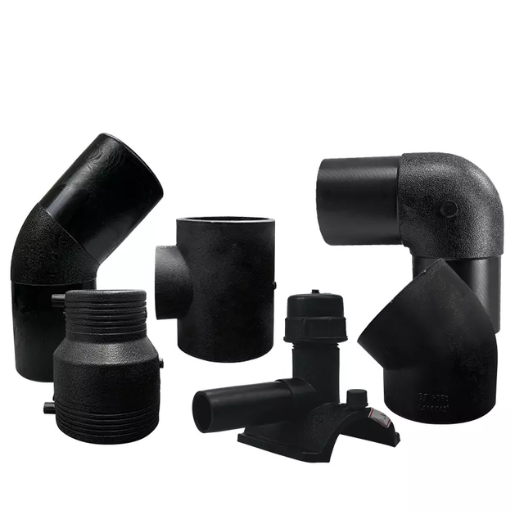DuPont’s High-Density Polyethylene (HDPE) pipe fittings have increased in popularity within different industries due to their outstanding robustness, adaptability, and resistance to rust. The HDPE fittings are used in various applications, including water distribution systems and industrial processes, as a crucial element in contemporary piping systems. This blog post aims to provide a detailed analysis of HDPE fittings, which includes advantages, types, methods of installation, and maintenance practices. After reading this article, readers will be aware of HDPE fitting and have the ability to make proper choices for their projects.
What Are HDPE Pipe Fittings?
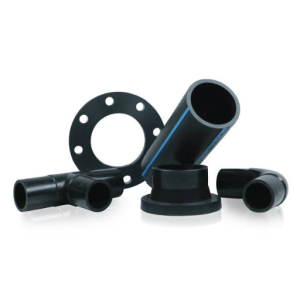
Image source: https://sangir.com/
The HDPE pipe fittings are made from high-density polyethylene material designed to link or join sections in an HDPE piping system. They have lightweight but sturdy construction that resists impact, chemicals, and UV rays. They come in different sizes and shapes, such as elbows, tees, reducers, and flanges, which promote efficient transfer and distribution of fluids via pipes made up of the same material. Their flexibility during the installation process means they can be applied in many sectors, such as the agriculture industry and water management firms, as they do not need much technical knowledge.
Understanding HDPE Pipe
HDPE pipe is a dynamic and versatile material widely used in different piping applications. HDPE pipe is noted for its high resistance to chemical corrosion and being lighter than metals or concretes, making it easy to move around during transportation and installation processes. HDPE pipes are made with smooth interiors that minimize friction and permit efficient flow of liquids. Water supply, gas distribution, and sewerage systems are some of the common uses. Furthermore, it is not uncommon for users to be enticed by their longevity since they can serve over 50 years, which makes them cost-effective in the long term. They can also be widely used due to their ability to resist extreme temperatures and environments.
Types of HDPE Pipe Fittings
My research has shown me that several essential HDPE pipe fittings perform specific functions within piping systems. Some examples include:
- Elbows: Angled at either 45 or 90 degrees, these fittings allow direction change.
- Tees: Tee fittings enable three pipes to join to branch off lines.
- Reducers: Reducers help transition from one larger-diameter pipe to another smaller one to accommodate varying flow rates.
- Flange Fittings: These fittings connect sections of pipes easily because they have flat surfaces that can be bolted together.
- Couplings: Couplings are just ordinary connectors that link two pipes together, allowing uninterrupted fluid flows
Several types of fitting play an essential role in ensuring the effective running and durability of HDPE piping systems in different areas; hence, they cannot be ignored.
Applications of HDPE Pipe Fittings
HDPE pipe fittings have a variety of uses in many industries because they can be adapted quickly and are strong. These include:
- Water and Wastewater Management: Municipal water supply systems and sewage infrastructure rely on HDPE fittings, which enable potable water delivery to communities and efficient wastewater treatment.
- Gas Distribution: In the gas sector, HDPE pipe fittings ensure that natural gas is conveyed safely. Their corrosion resistance makes them suitable for underground installations.
- Agriculture and Irrigation: HDPE fittings are commonly used in agriculture, especially irrigation systems. This guarantees a resilient method of delivering water to crops.
- Telecommunications and Electrical Conduits: HDPE fittings are used as outer casings to shield telecommunications cables and electrical wiring from environmental harm.
These applications highlight the role played by HDPE pipe fittings in fluid handling efficiency and infrastructure expansion for different sectors.
How Are HDPE Pipe Fittings Manufactured?
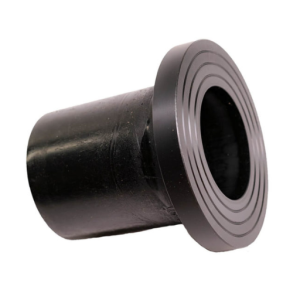
HDPE pipe fittings are made through either injection molding or extrusion processes. In the injection molding process, raw HDPE pellets are heated until they become molten, which is then injected into molds that produce the shape fitting. This method ensures accuracy in size and uniformity in quality across products. Conversely, the extrusion technique involves expelling melted HDPE via a die, creating long parts that are later cut into specified lengths for fitting dimensions. Through both methods, they stand free from any environmental stress due to their strength, adaptability, and flexibility, which serve the diverse needs of various applications. Quality control measures form an integral part of the fabrication process such that every fitting satisfies industry standards set for durability alongside its performance criteria at each production stage.
Injection Molded HDPE Fittings
Injection-molded fittings made of HDPE are widely known for their immense strength and versatility in application. HDPE pellets are melted in this manufacturing process, and the molten plastic is injected into molds crafted to very exact specifications to ensure dimensional accuracy and consistency. In brief, these fittings have become popular in applications that require withstanding high temperatures and pressure, such as water and gas distribution systems. Moreover, they are easily transported as they do not weigh much due to their lightweight character. Many experts in the industry opt for injection molded fittings due to their ability to provide a leak-proof connection and be resistant to chemical corrosion, thus making them ideal for use in demanding environments. That said, injection-molded HDPE fittings exhibit a perfect blend of endurance, utility, and ease of usage, making them distinct from other products on the market.
Fabricated HDPE Fittings
Fabricated HDPE fittings are essential for creating complex configurations in various piping systems. Unlike injection molded or extruded fittings, which are simply made by melting down HDPE material and then forcing it into a particular shape through compression molding or extrusion, fabricated ones involve joining flat sheets or pipes together via welding or fusion, etc. This makes fabrication suitable for specific designs and larger diameter pipes, hence higher customization levels. These provide me with better opportunities when executing projects that demand additional flexibility plus accuracy during assembly so that I can guarantee a high integrity level for the piping system involved at all times. Furthermore, the above technique is resistant to environmental elements; hence, it is preferred by both industrial developers and public works undertakers worldwide. Generally speaking, the adaptability and robustness embodied in fabricated HDPE fitting render them most suitable for challenging installation scenarios.
Butt Fusion and Electrofusion Methods
HDPE fittings and pipes can be joined using butt fusion and electrofusion.
For Butt Fusion, one needs to heat a heating element of the HDPE pipe or fitting until it reaches specific temperature points. The parts are heated adequately, after which heat sources are removed, and then they are pushed together while still hot as they cool down and solidify. It produces permanent strong bonds and is commonly used in many applications, mainly where large diameters and heavy wall pipes are required.
On the other hand, Electrofusion utilizes an electric current to raise the temperature of the coils built within fittings. When it is passed through these conduits, it makes them hot enough to melt, resulting in their fusion when cooled. This technique is advantageous because it allows jointing in narrow spaces and interconnecting different sizes and types of pipes. Joint quality matters, especially in gas or water distribution systems; hence, this method is always used. Both materials are essential for maintaining The integrity of the HDPE piping system for long periods so that all projects will have their fitting methods and environmental conditions.
Why Choose HDPE Pipe Fittings?
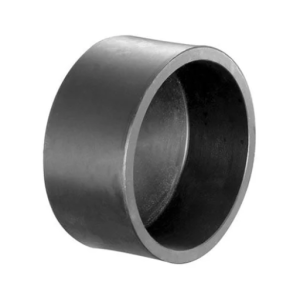
There is much to gain from selecting HDPE pipe fittings over other alternatives, especially in many areas of use. Compared to traditional materials, HDPE has high resistance against corrosion, hence further prolonging service life to prevent chemical damage. Additionally, this material’s suppleness eases installation work and modification depending on differing surroundings, thus reducing general expenses involved otherwise meted on construction projects at large; also, light pipe fittings make carrying them more efficient; these products offer peace while working with any construction project since they meet industrial requirements pertaining safety precautions among others by ensuring reliability; municipal uses need sturdy pieces able to bear increased temperatures as well as pressure such characteristics may be found in HPDE pipe fittings.
Advantages of HDPE Material
HDPE (high-density polyethylene) is a material that has several compelling advantages, making it an ideal choice for piping and fittings. Firstly, HDPE is well known for its outstanding resistance to chemicals and environmental stress, which significantly extends its lifespan in different applications. Besides this, HDPE’s light weight reduces shipping and installation costs, giving it an economic advantage. In addition to the above, it is flexible, meaning that it can bend without breaking under stress, making it easy to handle when installed on rough terrains. Again, such flexibility enables HDPE pipe fittings to have smooth inside surfaces with less friction, thus improving flow efficiency over time while reducing energy consumption. Lastly, its ability to tolerate both high and low temperatures makes it suitable for hot and cold water applications.
Durability and Flexibility
When I think about how tough and adaptable these things are, they distinguish them from other materials regarding HDPE pipe fittings, considering their toughness regarding resistance to impacts and weathering conditions. It can be bent or curved without breaking due to its suppleness, according to my experience, which comes in handy when the terrain is not even or during installation processes. This combination also means dependability but simplifies the installation process, making HDPE tube connections an appropriate choice in various areas.
Cost-Effectiveness
The cost-effectiveness of HDPE pipe fittings can be attributed to several factors. The primary one is that the initial material cost is usually lower than that associated with traditional piping options such as metals and PVC. This increases durability and reduces maintenance needs, hence fewer replacements over time, which translates into savings in the long run. Industry analysis shows that HDPE’s lightweight nature significantly reduces transport charges, while its ‘ease of installation’ further minimizes associated labor costs. Furthermore, efficient flow due to smooth interior surfaces reduces energy used by pump-dependent systems, which means operational cost reduction. In general, these things make HDPE fittings a good investment for different types of projects.
How to Install HDPE Pipe Fittings?
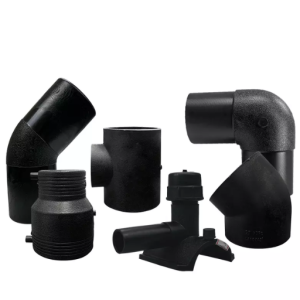
Installing HDPE pipe fittings demands proper planning and execution to ensure a secure and effective connection. Start by getting all the necessary tools, such as a pipe cutter, heat fusion equipment (if applicable), and safety gear.
- Cutting: Use a pipe cutter to get an even edge on the HDPE pipe. This facilitates a tight fit between the fitting and it.
- Prepare Fitting: Clean any debris from the fitting´s surface well before using it. When both pieces are joined, preheat them using the heat fusion procedure following the manufacturer’s guidelines.
- Fusion Process (If Applicable): When the heat fusion method is employed, sections are assembled by aligning the pipes with devices until they achieve the desired temperature level on either end. Afterward, pressure is applied at a constant duration, and the sections cool down before solidification occurs after they are removed from pressure.
- Mechanical Connections: On the contrary, use appropriate sealant or Teflon tape around threads before tightening securely where threaded or other mechanical connections are involved.
- Testing: Remember, during the installation process, to ensure there are no leaks by conducting a pressure test, hence ensuring correct system operation.
The outlined steps will guide you toward achieving an enduringly reliable installation of HDPE pipe fittings.
Preparation for Installation
To start installing HDPE pipe fittings, one must perform a well-detailed preparation. These are the essential steps you need to consider:
- Assemble Tools and Materials: Always ensure you have all the necessary tools for this process, such as a pipe cutter, heat fusion device (if required), wrenches, gloves, and goggles, among other safety gear.
- Inspect Pipe and Fittings: Examine the HDPE pipes and their respective joints for defects. Ensure that all parts are compatible with each other and conform to the envisaged application.
- Clean up Your Workplace: Remove dirt from your working area and ensure it is illuminated properly. A clean environment aids in accurate measurements and lessens the chances of accidents.
- Read Manufacturer’s Instructions: Take time to review the detailed installation directions furnished by the maker for the particular HDPE plumbing joints you are employing during installations.
- Plan Layout: Before cutting or fitting joints in place, plan how your system will be arranged using HDPE. This will prevent excessive cutting while ensuring an efficient flow during final installments.
These preparatory measures enable a smooth installation process saved with HDPE pipe fittings.
Step-by-Step Installation Process
A systematic approach is the best way to properly install HDPE pipe fittings. Here’s what I do:
- Cutting the Pipe: I start by measuring the length of the HDPE pipe and making a clean, straight cut with a pipe cutter. The cut should be square with the pipe for a good joint.
- Heating the Fittings: If heat fusion methods are to be used, my heat fusion equipment is set up, and the ends of both pipes and fittings are heated until they attain the accurate temperatures stated in the manufacturer’s instruction manuals.
- Joining the Pieces: When heating the pipe and fittings, I insert the pipe into its fitting quickly and carefully so that it is well-fitted. For some seconds, I keep them together to bond correctly.
- Cooling Time: When connected, the fittings should be allowed to cool quietly to form a strong bond. During this time, it is crucial not to touch or pressurize the joints.
- Pressure Testing: After cooling off, I check for leaks through pressure testing just before operations on any installation project can start; this assures me of the proper functioning of the installed system. This step ensures that all systems have been checked out for integrity through pressure testing before an operation starts on any installation project.
By following these steps diligently, I can ensure a successful and lasting installation of HDPE pipe fittings.
Common Installation Issues and Solutions
Several common issues could impede the installation of high-density polyethylene (HDPE) pipe fittings. Presented here are the top concerns, along with the corresponding answers:
- Poor Fusion Technique: The most common issue is bad fusion between pipes and fittings, which can result in leaks and structural weaknesses. Eliminate this by ensuring clean surfaces before heating, following manufacturers’ temperature/time guidelines, and using correct fusion equipment.
- Fitting Misalignment: Poor alignment during fitting installation places stress on joints, leading to potential failures. Prevent this by adequately supporting the pipe and employing alignment tools or jigs for the right positioning prior to and during fusion.
- Shifts in Temperature: Variations in temperature while heating can cause poor fusions. Therefore, it is necessary to monitor environmental conditions and adjust heat time according to manufacturer specifications. Consistency in temperature will help achieve a good bond between materials.
Recognizing these frequent issues and implementing proposed solutions will make your installation of HDPE pipe fittings more dependable and efficient.
What Are the Different Categories of HDPE Pipe Fittings?
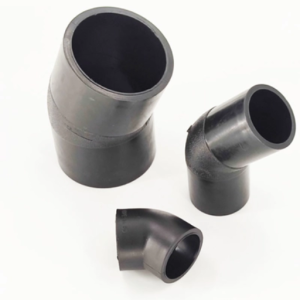
HDPE pipe fittings are classified into different types according to shape and function. These include:
- Elbows: They redirect a pipeline by various angles, e.g., 45° or 90°.
- Tees: They make branches in pipes, allowing for the joining of three pipes at right angles (90°).
- Reducers: They join pipes with different diameters to transition from a bigger one to a smaller one efficiently.
- Couplings: These serve as sockets that connect two pieces of pipe together, ensuring a secure and leak-tight connection.
- Caps: These are used to seal off the end of the pipeline, thereby preventing fluid leakage and protecting it from contamination.
- Flanges: These enable joining flanges with pipes or fittings and can be easily disassembled in larger systems.
Each category has specific functions designed to improve the performance and functionality of HDPE piping systems.
HDPE Elbows
HDPE elbows are vital fittings that help change piping systems’ direction. Manufactured using high-density polyethylene (HDPE), these elbows come in several angle options, including 45°and 90°, so they last and remain flexible and resilient under adverse environmental conditions. HDPE piping systems ensure steady flow while minimizing pressure drops and leaks. Like other HDPE fittings, proper installation and alignment influence their life span and performance in the network.
HDPE Tees and Reducing Tees
HDPE tees are multipurpose fittings that allow for branching of the pipe systems, and they join three pipes at 90° angles. I appreciate how these help to distribute fluids effectively throughout the system. On the other hand, reducing tees offers a way of joining pipes with different diameters, thus allowing for a smooth changeover from a big pipe to a small one, which is essential in maintaining the correct pressure and flow rates. Both types play an important role in optimizing the layout and functionality of HDPE piping networks so that they work well under various conditions.
HDPE Adapters and Couplings
HDPE adapters and couplings are crucial elements that link up different piping systems and fittings by providing tight connections without any leakage. Adapters accommodate a wide range of pipe sizes or materials – for instance, changing between HDPE and PVC or metal while not distorting fluid movement’s path integrity. Couplings, on their part, serve as a means of uniting identical piping units to prolong a pipeline easily. In addition, both adaptors and connectors come in many dimensions and configurations, making the system design flexible. Consequently, proper selection and installation of these installations is mandatory if reliable performance and long life spans in HDPE pipe works are needed.
What Are the Standards and Specifications for HDPE Pipe Fittings?
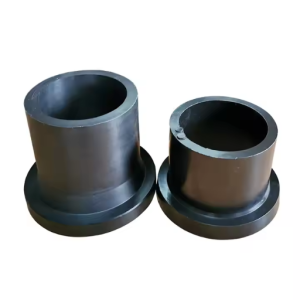
Standards that ensure quality, safety, and compatibility within piping systems govern HDPE pipe fittings. The most common USA standards are those of the American Society for Testing Materials (ASTM), including ASTM D3035 for HDPE pipes and fittings installation and ASTM F714, which covers HDPE pressure pipes specifications. The American Water Works Association also provides AWWA C901 and C906 specifications for water service and pressure applications regarding HDPE pipes. Compliance with these standards will make it possible to sustain the required pressures on HDPE fitting and environmental conditions, reducing the risks of failure.
ASTM Standards
ASTM Standards on HDPE Pipe Fittings ascertain its excellence and performance levels. Standard ASTM D3035 gives particular data about the requirements to be fulfilled by polyethylene (PE) pipe system, specifically during its installation, ensuring general protection. Typically, this includes guidelines on physical properties, material requirements, and testing procedures to guarantee that the fittings can handle the necessary pressure and environmental factors. In contrast, ASTM F714 is a specification for only HDPE Pressure Pipes used in diverse application areas; it presents directives regarding pressure rating, dimensions, or even material characteristics. It is through adherence to these guidelines above that both manufacturers and installers can ensure reliability and performance in various applications relating to water distribution, among others, leading to successful project outcomes.
SDR Requirements
According to my interpretation, the Standard Dimension Ratio (SDR) is crucial for ascertaining how thick HDPE pipes and fittings should be in terms of their diameter. The SDR number is arrived at by dividing the outside diameter of a pipe by its wall thickness, which determines whether it can handle pressure. For example, a thicker-walled structure allows for higher pressure levels if an SDR is lower. One must choose the suitable SDR based on his/her specific application requirements to comply with the relevant ASTM standards. This ensures that the piping system’s integrity is maintained and enhances performance and longevity under different environmental conditions.
Industrial and Commercial Applications
HPDE piping systems are extensively used in industrial and commercial sectors because they are notable for their resistance to corrosion and durability. They are often used in water distribution, wastewater management, and industrial process piping, providing a robust solution for various environments, including severe climatic conditions. Additionally, compared with materials such as metal or concrete, HDPE pipes can be installed and handled more quickly because they are very light.
Furthermore, in agricultural activities where irrigation systems are employed, HDPE pipes are increasingly preferred due to their resistance to chemicals and moisture. HDPE piping is also highly reliable and versatile when it comes to moving fluids across different industries, from mining to telecommunications, enabling efficient operations over many years.
Reference sources
- HDPE Fittings – A Complete Guide
- Download HDPE Handbook Chapters
- HDPE Pipe Fittings – HDPE Fittings – Polyethylene Fittings
Frequently Asked Questions (FAQs)
Q: What are HDPE pipe fittings?
A: HDPE pipe fittings are high-density polyethylene pipe fittings used to connect sections of polyethylene pipe. These fittings are known for their durability and flexibility and are available in various shapes and sizes to suit different piping systems.
Q: What is a 90-degree elbow in HDPE piping?
A: A 90-degree elbow is a type of fitting used in HDPE piping systems to change the direction of the flow at a right angle. It helps configure the piping system according to the layout requirements.
Q: What are the benefits of using high-density polyethylene pipe fittings?
A: High-density polyethylene pipe fittings offer several benefits, including resistance to corrosion, flexibility, durability, and a long service life. They are also lightweight and easy to install, making them a preferred choice for various piping applications.
Q: How do I choose the right HDPE pipe fittings for my project?
A: Choosing the right HDPE pipe fittings involves considering factors like the type of fluid being transported, the required pressure rating, and the specific requirements of the piping system. It is also essential to ensure that the fittings comply with standards such as ASTM D3261 for quality assurance.
Q: Can HDPE pipe fittings be used for drainage systems?
A: Yes, HDPE pipe fittings are commonly used for drainage systems due to their high resistance to chemicals and abrasion, as well as their flexibility and durability. They are ideal for both residential and commercial drainage applications.
Q: What is an IPS in the context of HDPE pipes?
A: IPS stands for iron pipe size, a standard sizing for HDPE pipes and fittings. It indicates the external diameter of the pipe, ensuring compatibility with other IPS-sized components in the piping system.
Q: How do I install HDPE pipe fittings?
A: HDPE pipe fittings can be installed using various methods, such as butt fusion, electrofusion, and mechanical connections. Following the manufacturer’s guidelines and recommendations for proper installation is essential to ensure a reliable and leak-free piping system.
Q: What are end caps in HDPE piping systems?
A: End caps are fittings used to terminate the end of an HDPE pipe. They seal the end of the pipe, preventing any fluid from escaping and protecting the piping system from external contaminants.
Q: Where can I find technical support for HDPE pipe fittings?
A: Most manufacturers and suppliers offer technical support and customer service to assist with selecting, installing, and maintaining HDPE pipe fittings. For any specific queries, it is advisable to follow us on the manufacturer’s website or contact their technical support team.
Q: Are HDPE pipe fittings pressure-rated?
A: Yes, HDPE pipe fittings are pressure-rated to ensure they can withstand the specified pressure levels in the piping system. For safety and performance assurance, it is crucial to select fittings that match the pressure requirements of your project.



